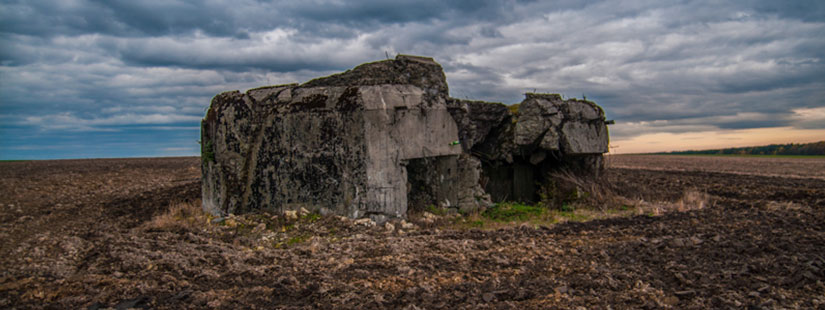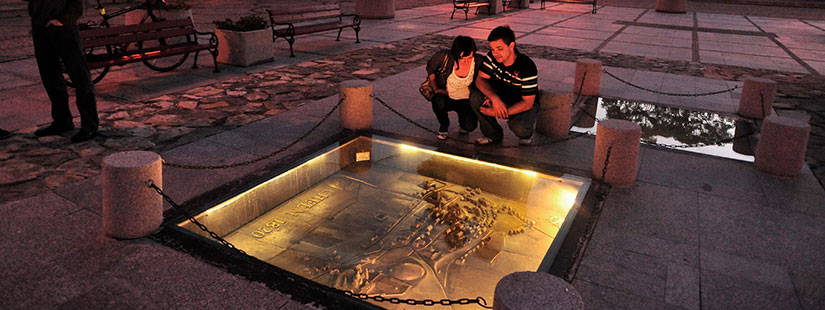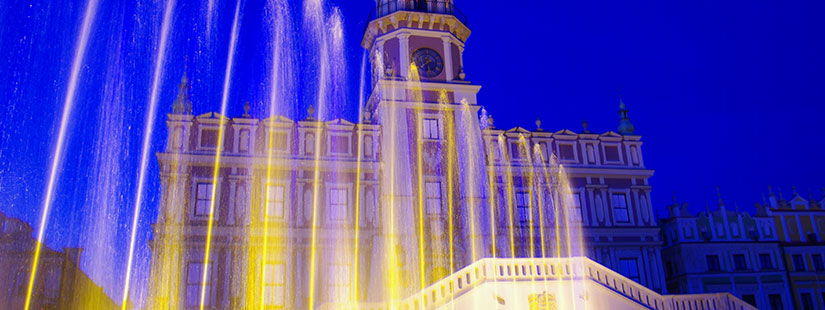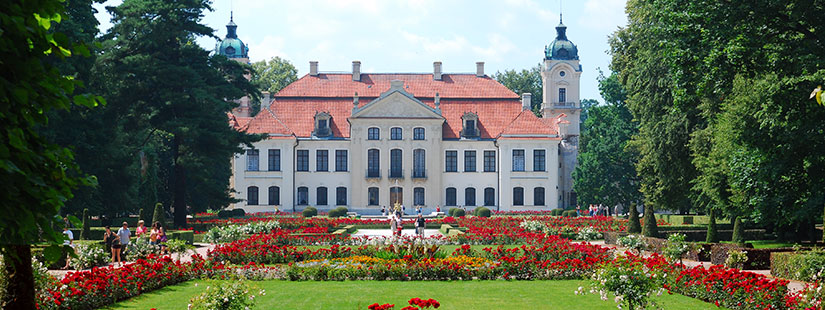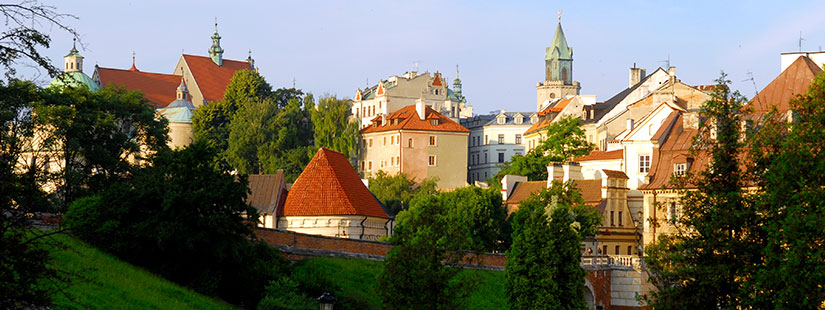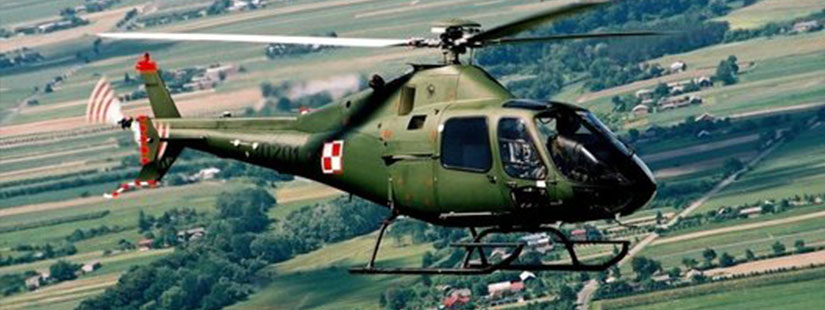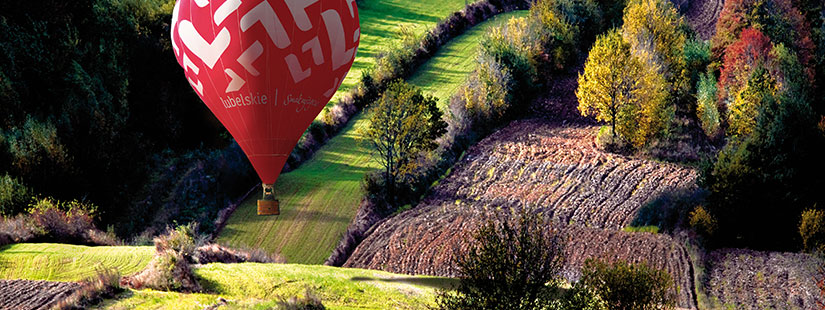The Lubelskie Voivodeship is located in the eastern part of Poland, on the border of the Central European Lowlands on one side, and the old mountains of the Central Europe on the other side, within the interfluve of the largest Polish River – Vistula and the borderland Bug. The upland part of the Lublin region is more populated and is predominantly agricultural with islands and strips of forest, water, meadow or steppe fragments of “green hubs.” These areas make up the external (green) ring of the voivodeship with a particularly high ecological activity. There is an inner ring in the middle of the upland area created by the Valley of the Ciemięga river, the Prawiednickie Forest and the complex: Zemborzycki Reservoir – Dąbrowa – Świdnickie Forest. The lowland part covers agricultural areas and forests, the particular natural richness of which are the water, peatland and forest subzone of the Łęczyńsko-Włodawskie Lake District associated with the Wieprz River Hog Valley, representing the ecological and landscape axis of this part of the voivodeship. Natural resources are deposits of mineral resources: coal, crude oil and natural gas, considered to be the basic minerals, as well as carbonated materials, loam, gravel and peat classified as common minerals. Carbonate materials include marls, chalk and gaize. Loam materials are represented by loess, clay and loam, while sands represent natural aggregate. The climate of the Lubelskie Voivodeship reflects the influence of the continental and oceanic air masses. It is characterized by generally long, sunny summers and often very cold winters and little rain. The most industrialised areas are located in the central strip of the voivdeship in the biggest urban centres. Every year, the annual emissions of sulphur dioxide and dust emission is declining as a result of a number of environmental actions carried out. The projects primarily covered an assembly of effective dust extraction system, as well as the modernization of heat and power generating plants, boiler plants and the implementation of new energy-saving technologies and thermal insulation of buildings, which resulted in a decrease in the demand for thermal energy.
The northern part of the region lies in a strip of lowland landscapes, while the southern part in the strip of upland landscapes. The western edge of the voivodeship is located in the central valley of the Vistula River, which forms a gorge cutting into a depth of 100 metres. The lowest point of the region is located in the Vistula valley below Stężyca (107 metres above the sea level), and the highest point is located in Roztocze – Krągły Goraj, the Lubycza Królewska commune (388.7 metres above the sea level). Groundwater utility waters occur in the Cretaceous, Tertiary and Quaternary formations. The largest recorded groundwater reserves occur in the Cretaceous formations. The rivers of the Lublin region – Wieprz, Bystrzyca, Bystra, Ciemięga and Czerniejówka and lakes inhabited by rare species of vertebrates both in Poland and throughout Europe, such as: belica, stone loach, spined loach, European weather loach and European bullhead. Rare species of plants and animals also create the natural qualities of the region. Particular attention should be paid to the legally protected species under total and partial protection. Primrose is the great peculiarity of the Lubelskie Voivodeship, which grows in the quantity of several specimens in only one spot in Poland – in the dry ground forest near the City of Lublin. The most interesting ones include Jacob’s Ladder growing near Germany, grass lily nearby Kazimierz Dolny, Moldavian monkshood near Opole Lubelskie, Manchurian monkshood near Germany, Marsh Pennywort, Downy Willow, great sundew, marsh club-moss, Moor-king Lousewort, bog rosemary, Rannoch-rush on the Łęczyńsko – Włodawskie Lake District, and animals are represented by black stork, white-tailed eagle, lesser spotted eagle, capercaillie and eagle owl. Huge forest areas also deserve attention here: Janowskie Forest, Solska Primeval Forest, Włodawskie, Parczewskie and Kozłowieckie Forest, xerothermophilous grassland nearby Kazimierz Dolny, Janowiec, Łęczna, Bychawa and Lublin, stippa grasses occurring only in Dobre and on the hill of Three Crosses in Kazimierz Dolny, as well as the area of the Łęczyńsko–Włodawskie Lake District – the only lake district in Poland, which is situated beyond the last glaciation and covers 67 lakes, including 22 lakes encompassing an area of over 50 hectares, and the largest of them are the following deep mesotrophic lakes: Białe Włodawskie, Piaseczno, Krasne, Zagłębocze, Rogóźno and eutrophic lakes: Kleszczów, Łukcze, Łukie and Sumin. In 2002, UNESCO gave the place a status of the International Biosphere Reserve “Polesie Zachodnie.” While, the above mentioned Roztoczański National Park, which was established in 1974, currently covers an area of 8,483 hectares, including forests of 8.102 hectares (95.5%), iout of which 806 hectares (9.5%) are under strict protection.
source: www.lubelskie.pl







